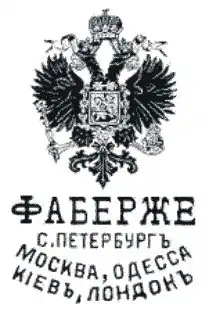Kelch Hen (Fabergé egg)
The Kelch Hen egg is a jewelled, enameled Easter egg that was made in St. Petersburg between 1898 and 1903 under the supervision of Michael Perkhin , on behalf of the Russian jeweler Peter Carl Fabergé. It was made for the Russian industrialist Alexander Ferdinandovich Kelch, who presented the egg to his wife, Barbara Kelch-Bazanova.[1] It is thought to be the first of the seven eggs that, every year from 1898 to 1904, were ordered by Alexander Kelch and made by Michael Perkhin, Fabergé master goldsmith at the time, frequently inspired by the imperial eggs.[2]
| Kelch Hen Fabergé egg | |
|---|---|
.jpg.webp) | |
| Year delivered | 1898 |
| Customer | Alexander Ferdinandovich Kelch |
| Recipient | Barbara Kelch-Bazanova |
| Current owner | |
| Individual or institution | Viktor Vekselberg Fabergé Museum in Saint Petersburg, Russia |
| Year of acquisition | 2004 |
| Design and materials | |
| Workmaster | Michael Perkhin |
References
Sources
- Faber, Toby (2008). Faberge's Eggs: The Extraordinary Story of the Masterpieces That Outlived an Empire. Random House. ISBN 978-1-4000-6550-9.
- Forbes, Christopher; Prinz von Hohenzollern, Johann Georg (1990). FABERGE; The Imperial Eggs. Prestel. ASIN B000YA9GOM.
- Lowes, Will (2001). Fabergé Eggs: A Retrospective Encyclopedia. Scarecrow Press. ISBN 0-8108-3946-6.
- Snowman, A Kenneth (1988). Carl Faberge: Goldsmith to the Imperial Court of Russia. Gramercy. ISBN 0-517-40502-4.
This article is issued from Wikipedia. The text is licensed under Creative Commons - Attribution - Sharealike. Additional terms may apply for the media files.
